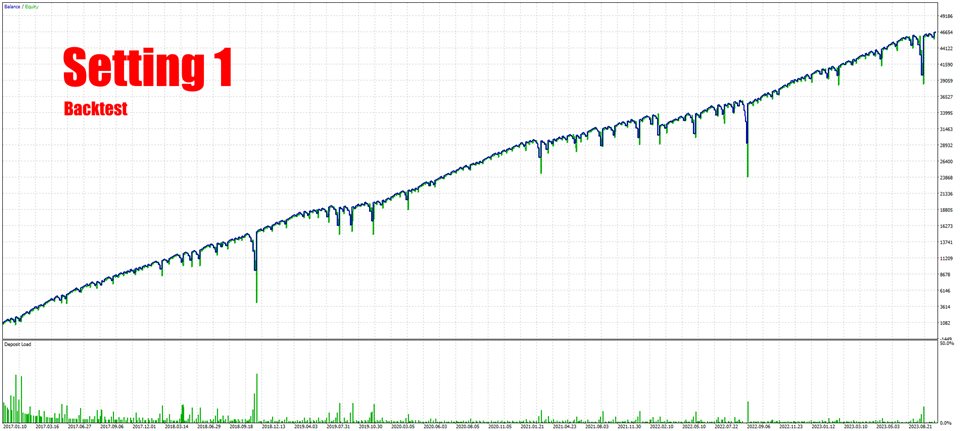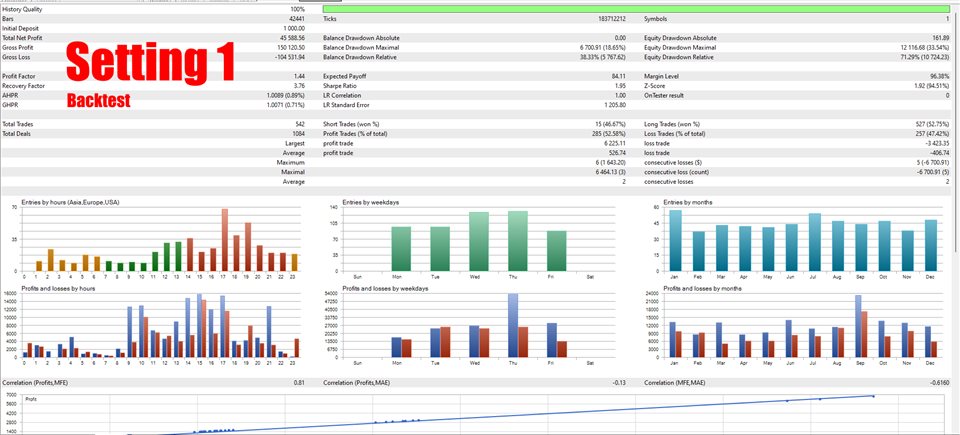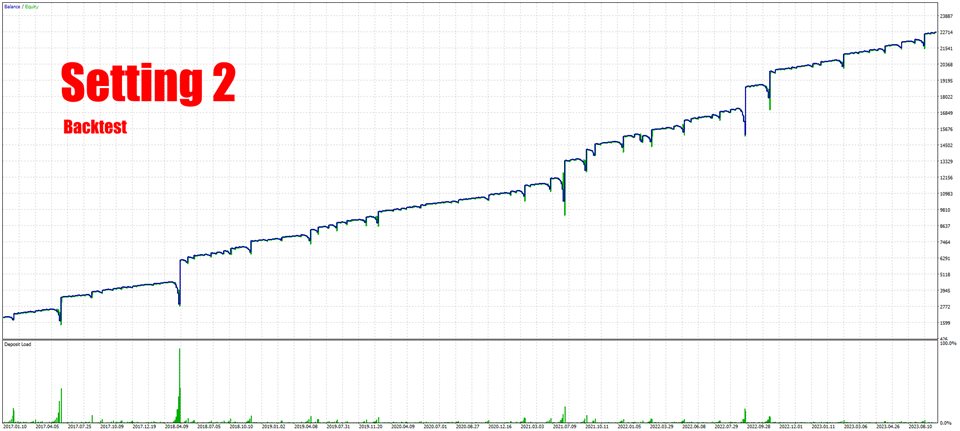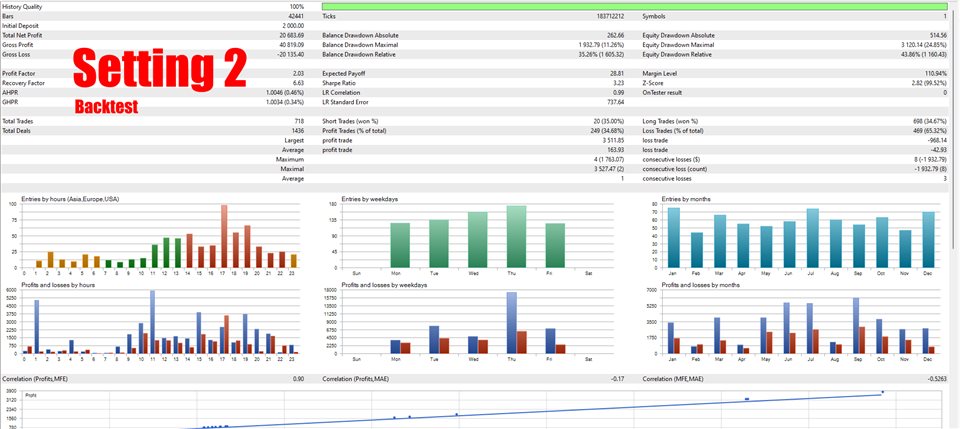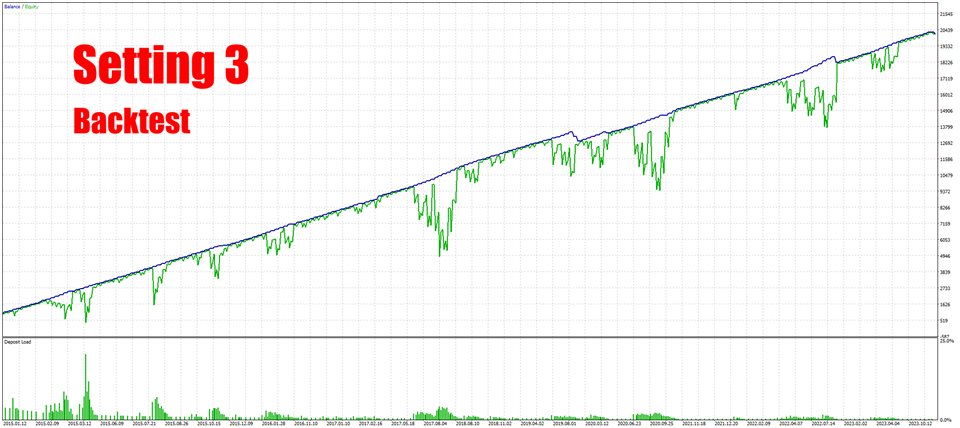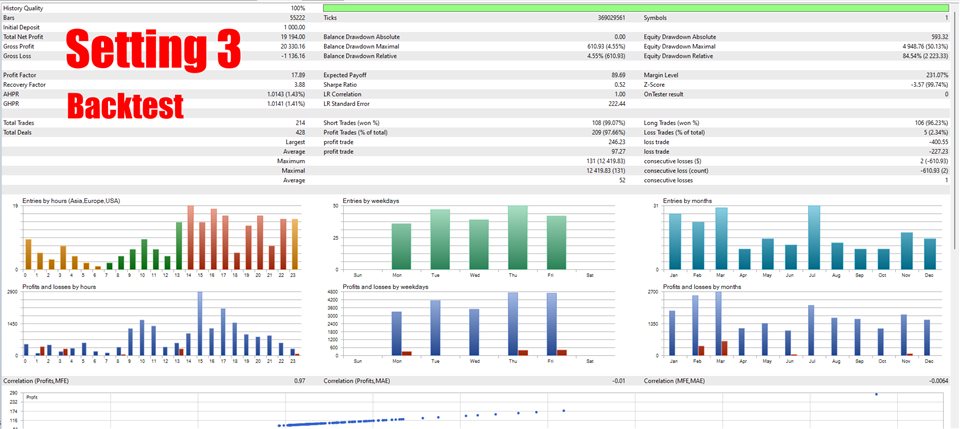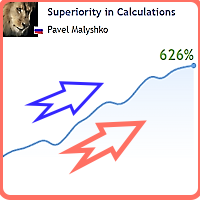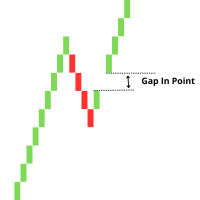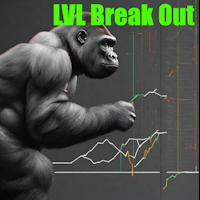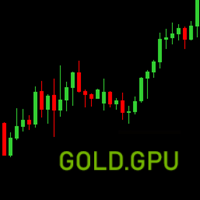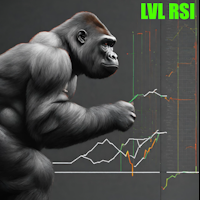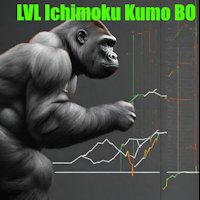LVL Creator Pro
- Uzman Danışmanlar
- LVL Invest
- Sürüm: 14.3
- Güncellendi: 30 Aralık 2023
- Etkinleştirmeler: 10
Build your own trading strategy using the combination of indicators you want from those offered (each indicator can be used up to 2 times) in addition to a few personal touches:
-
Average True Range
-
Bollinger Bands
-
Ichimoku Kumo Breakout
-
Ichimoku Tenkan Sen Kijun Sen Cross (TKC)
-
MACD
-
MFI
-
Mobile Average
-
RSI
-
SAR
-
Stochastic
-
Double Mobile Average
-
Triple Mobile Average
Other free expert advisors are available in my personal space as well as signals, do not hesitate to visit and leave a comment, it will make me happy and will make me want to offer content.
Expert advisors currently available:
- LVL Creator
- LVL Bollinger Bands
- LVL RSI mt5
Please, send me a message after your purchase (mention the version of the EA), I will send you setting files (only for this version).
Trading is not a magic solution, so before using this expert on a live account, carry out your back tests and tests on a demo account.
When you will use that expert advisor on a live account, don't hesitate to share your account link with me, I would be delighted to follow your results.
. Suggested symbols:
-
EURUSD
-
USDCHF
-
USDJPY
. Definition of parameters:
Values between parentheses mean the default values of the indicators.
-
Risk Management
-
Allocation Type: how the allocation is calculated
-
Size: size value depending of the allocation type
-
Stop Loss
-
Use stop loss when opening order: true to set a stop loss while opening a position, false otherwise
-
Use trailing stop loss: true to use a trailing stop loss, false otherwise
-
Stop loss type: stop loss type to use
-
Stop loss value: stop loss value to use
-
Take Profit
-
Use take profit: true to set a take profit while opening a position, false otherwise
-
Take profit type: take profit type to use
-
Take profit value: take profit to use
-
Settings
-
Reverse trades: true to open the opposite type of position provided by the strategy, false otherwise
-
Close all positions and switch off the EA: true to close all open positions and switch off the expert advisor
-
Magic number: magic number to open positions
-
Trading Hours
-
Trading start hour: the time from which the EA can open a position
-
Trading end hour: the time from which the EA closes a position
-
Trading Days
-
Monday: true open a position on Monday, false otherwise
-
Tuesday: true open a position on Tuesday, false otherwise
-
Wednesday: true open a position on Wednesday, false otherwise
-
Thursday: true open a position on Thursday, false otherwise
-
Friday: true open a position on Friday, false otherwise
-
Saturday: true open a position on Saturday, false otherwise
-
Sunday: true open a position on Sunday, false otherwise
-
Trades
-
Close all positions every day: true to close all positions every day at the time corresponding to “Trading end hour”, false otherwise
-
Close all positions on Friday: true to close all positions on every Friday at the time corresponding to “Trading end hour”, false otherwise
-
Open buy positions: true to authorise the EA to open buy positions, false otherwise
-
Open sell positions: true to authorise the EA to open sell positions, false otherwise
-
Position Management
-
Position management: type of position management (none, martingale or grid)
-
Coefficient type: if the new lot size is an addition or a multiplication from the last lot size
-
Coefficient management: the value to add or multiply to calculate the new lot size
-
Max number of positions: the maximum number of positions in case of grid
-
Min distance between positions: the minimum distance in points between the last and the new position
-
Average True Range
-
Number of ATR to use: number of ATR to use
-
ATR timeframe short: timeframe of the first ATR
-
ATR timeframe long: timeframe of the second ATR (useless if 1 ATR)
-
Mobile Average Period: period
-
Value for high volatility: averaging period
-
Bollinger Bands
-
Number of Bollinger Bands to use: number of Bollinger Bands to use
-
Bollinger Bands timeframe short: timeframe of the first Bollinger Bands
-
Bollinger Bands timeframe long: timeframe of the second Bollinger Bands (useless if 1 Bollinger Bands)
-
Mobile average period: period for average line calculation
-
Mobile average shift: horizontal shift of the indicator
-
Deviation: number of standard deviations
-
Ichimoku Kumo BO
-
Number of Ichimoku Kumo BO to use: number of Ichimoku Kumo BO to use
-
Ichimoku Kumo BO timeframe short: timeframe of the first Ichimoku Kumo BO
-
Ichimoku Kumo BO timeframe long: timeframe of the second Ichimoku Kumo BO (useless if 1 Ichimoku Kumo BO)
-
Tenkan Sen: period of Tenkan-sen
-
Kijun Sen: period of Kijun-Sen
-
Senkoun-Span: period of Senkou-Span
-
Ichimoku TKC
-
Number of Ichimoku TKC to use: number of Ichimoku TKC to use
-
Ichimoku TKC timeframe short: timeframe of the first Ichimoku TKC
-
Ichimoku TKC timeframe long: timeframe of the second Ichimoku TKC (useless if 1 Ichimoku TKC)
-
Tenkan Sen: period of Tenkan-sen
-
Kijun Sen: period of Kijun-Sen
-
Senkoun-Span: period of Senkou-Span
-
MACD
-
Number of MACD to use: number of MACD to use
-
MACD timeframe short: timeframe of the first MACD
-
MACD timeframe long: timeframe of the second MACD (useless if 1 MACD)
-
Period of the fast mobile average: period for Fast average calculation
-
Period of the slow mobile average: period for Slow average calculation
-
Signal of the period: period for their difference averaging
-
MACD value to open a buy: MACD value to open a buy position
-
MACD value to open a sell: MACD value to open a sell position
-
MFI
-
Number of MFI to use: number of MFI to use
-
MFI timeframe short: timeframe of the first MFI
-
MFI timeframe long: timeframe of the second MFI (useless if 1 MFI)
-
Period of the mobile average: averaging period
-
MFI value to open a buy: MFI value to open a buy position
-
MFI value to open a sell: MFI value to open a sell position
-
RSI
-
Number of RSI to use: number of RSI to use
-
RSI timeframe short: timeframe of the first RSI
-
RSI timeframe long: timeframe of the second RSI (useless if 1 RSI)
-
Period of the mobile average: averaging period
-
RSI value to open a buy: RSI value to open a buy position
-
RSI value to open a sell: RSI value to open a sell position
-
SAR
-
Number of SAR to use: number of SAR to use
-
SAR timeframe short: timeframe of the first SAR
-
SAR timeframe long: timeframe of the second SAR (useless 1 SAR)
-
Price increment step - acceleration factor: maximum value of step
-
Stochastic
-
Number of Stochastic to use: number of Stochastic to use
-
Stochastic timeframe short: timeframe of the first Stochastic
-
Stochastic timeframe long: timeframe of the second Stochastic (useless 1 Stochastic)
-
K Period: K-Period
-
D Period: D-Period
-
Slowing: final smoothing
-
Stochastic value to open a buy: Stochastic value to open a buy position
-
Stochastic value to open a sell: Stochastic value to open a sell position
-
Double EMA
-
Number of double EMA to use: number of Double EMA to use
-
Double EMA timeframe short: timeframe of the first Double EMA
-
Double EMA timeframe long: timeframe of the second Double EMA (useless if 1 Double EMA)
-
Horizontal shift: horizontal shift
-
Average period of the mobile average: averaging period
-
Triple EMA
-
Number of triple EMA to use: number of triple EMA to use
-
Triple EMA timeframe short: timeframe of the first triple EMA
-
Triple EMA timeframe long: timeframe of the second triple EMA (useless if 1 EMA)
-
Horizontal shift: horizontal shift
-
Averaging period of the first mobile average: averaging period of the first mobile average
-
Averaging period of the second mobile average: averaging period of the second mobile average
-
Averaging period of the third mobile average: averaging period of the third mobile average

